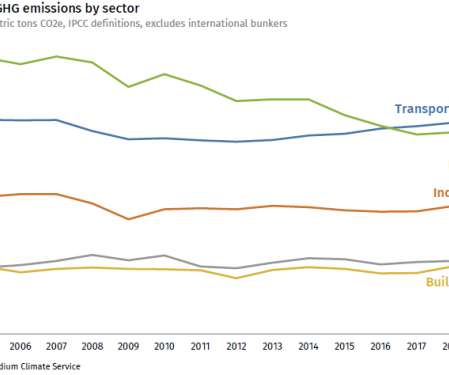Rhodium Group estimates US GHG fell 2.1% in 2019, driven by coal decline
Green Car Congress
JANUARY 8, 2020
At roughly 12% below 2005 levels, the US is at risk of missing its Copenhagen Accord target of a 17% reduction by the end of 2020, and is still a long way off from the 26-28% reduction by 2025 pledged under the Paris Agreement. and emissions from other sectors (agriculture, waste, land use, oil and gas methane, etc) rose by 4.4%.


























Let's personalize your content